Recently, the creation of various garden compositions and alive hedges in its sections has become fashionable and popular. To do this, all sorts of plants, blooming and leaf falling, coniferous and herbaceous are used. There is a huge number of plants, the appearance of which is simply amazing. It is precisely that an ebony belongs to, undeservedly deprived of attention in Russia.
Although in Europe it is one of the favorite plants for landscape design. Probably, it happened because of the wrong blossom of Becklert and his poisonousness. But his unique features, the ability to create all sorts of forms of crowns and unpretentiousness in growing and leaving makes the believer with a welcome garden decoration.
In this article, we will consider the features and description of Becklet, and also learn about all the most popular types and varieties of this bright shrub. More in more detail we will tell about the main nuances of agrotechnika growing.
Features and Description of Becklet
An eavester is a leaf fall or evergreen shrub, less often with a tree that belongs to the family of eavestelet. This is a very common plant that grows in nature in the tropics, subtropics and moderate latitudes around the world. But many do not risk it to plant him in their sites because of the poisonousness of the Becklet. Despite the fact that the birds are calm feed on the fruits of shrub, for people these berries of poisonous. Just 35 berries for an adult, so that everything is complete fatal. At a smaller dose, arrhythmia, paralysis, weakness and diarrhea can begin. It is for this reason that such shrubs do not recommend landing in places of mass accumulation of children.
But despite this, the bearer is still popular and is a very beautiful plant, worthy of occupying the honorable place in the garden plot.
Very interesting are the history of the appearance of this plant. According to one of them, the goddess Flora at the time of the creation of the world lost her brooch and one earrings. And for it, she turned them into two plants with dead flowers. But since the brooch and the earrings were in one place, only one unique plant appeared - the becklest.
According to the second history of the origin of this plant, one evil witch was angry with people and created a poisonous shrub. But then changed his mind and made it medicinal. She herself turned into a small bird of Malinovka, who was not afraid of the poison of Becklert, and began to spread this wonderful plant around the world.
Description of Becklet:
- Beeskeletlet is a plant that can be leaf fall and evergreen. Also, depending on the specific variety, this plant can be a shrub or a tree.
- This culture prefers to grow in the floodplains of rivers, various valleys and undergrowths. Completed in Europe, Asia, Australia and America.
- There are beacklets in different heights. In nature, there are species that can reach 8 meters in height. But among cultivated species, you can meet dwarf beacons, tall and even evenly butlets Liana.
- A shrub or tree is formed by rounded shoots that can be represented, branched, fluttering. All this is reflected in the concrete grade of Becklet.
- The leaves of the Becklet are simple opposite, with a smooth shiny surface. The color they are dark green, although there are varieties with white, cream spots in the middle of the leaves. In the fall, foliage is painted in bright shades of red.
- After the blooming of foliage on the shrub appears, unpleasant flowers appear, which smell very unpleasant.
- In color, they are dull yellowish-green, cream or burgundy, are collected in small inflorescences of 4-5 pieces in one. Inflorescences in the form of creeps or thyroid.
- The becklest has very unusual fruit form. They are a four-part box inside which seeds are located.
- In the summer, the fruit of the becklett of green color, and in the fall painted in red, yellow, scarlet, pink, white. After ripening, the fruit box cracks and their species becomes very original - similar to the open parachute.
- The beacklets are very unpretentious, perfectly feel at various soils and in conditions of temperate climate with severe winters.
- All parts of the plant is poisonous, so when it is cultivated, you need to be very neat. However, many species are used in medicine for making medicines.
- Becklet shrubs are used to landscap the site and creating alive hedges. You can also grow a homemade trash in a pot.
Popular views and varieties of Beckleta
To date, there are about 220 species of becklett, which are distinguished by the appearance and color of foliage and fruit. Consider the most popular varieties and varieties of this unusual shrub that can be found in our country.
European bearing
This type of beckleta is distributed in Western Europe and Asia. European eaves grows in the form of a tree that loves very much. Height can reach 6-8 meters. Soothes from the young trees of green color, and in an adult becomes almost black with characteristic cork growths. Leaves of the oblong shape in length 11 cm. Inflorescences consist of 4-5 greenish-white colors. This kind of beckleta is good endurance.
Popular Varieties of European Becklet:
- Red Cascade. A distinctive feature of this variety - seeds very quickly lose their germination. Before landing, they must be stratified, otherwise they will not sprout.
- Albus. Beeskeleton with cream flowers and orange seeds.
Becklets Thutuna
One of the most popular species of this shrub. It is a fluttering shrub, which is in height reaches 30-60 cm, less often 1 m. The belch belch is a very decorative shape, which will become an excellent decoration of the site. Large parts of the soil can easily cover. The leaves are small oblong, in length about 4 cm. The color is bright green, often there are varieties with stains and border of golden and white. It grows perfectly in the shade, it is quite frosty. China is considered to be China.
Popular varieties of Becklert Force:
- Emerald Gaiety and Emeraldn Gold. These are very popular Perechta Porkleta Potchildren. Emerald variety can be easily grown in personnel and pots, they are great.
- Radicans. Very valuable grade of this type of Becklet. It has the ability not only to step on the ground, but the opportunity to climb trees and walls. Leaves of this shrub evergreen.
Breeding beelandist
The birthplace of this type of Beckleta is the Far East, namely China, Korea, Sakhalin. It is a low shrub, which in nature reaches a height of 2 meters, in a culture - 1 m. The flange essay has diamond-shaped leaves of green, which fall red in the fall. Beautifully look at the branches of the shrub, which have a rounded four-gamped form with minor growths.
Popular Breedled Becklet Varieties:
- Compactus. Based on the name, it can be understood that this variety is low, only 1 meter in height. Great grows in the shade.
Japanese beacon
In nature, this kind of beckleta can grow up to 7 meters and is very similar to the belching. However, on the territory of Russia, the grades of the Japanese beckleta are most often grown, which are not exceeded 0.5 m in height. It is such a lowerness that allows you to grow this plant in indoor pots and decorate the office or at home. He has evergreen, small, in color - dark green. Caring for indoor jesterist Japanese will not be much difficulty. Before the beginning of winter, you need to pick up pots into the house with bushes and put them in the unheated well-lit room. From this type of Becklet, you can grow a beautiful bonsai, giving it all sorts of geometric shapes.
Popular Besquesta Japanese varieties:
- Aureo Marginat. Besquelet varieties with beautiful green leaves with golden border around the edge.
- Microfillas. In height can reach 0.5 meters, so it is great for growing at home. Green leaves.
Bearded beelander
The second name of this shrub is low-shrub. This is a leafy shrub, which is in height reaches 2 m. In nature, the bearded reaches a height of 5-6 m. It received its name due to the presence of small-scale warts on shoots. The leaves are light green, oblong, the pink shade becomes in the fall. Flowers small, brownish color. It is unpretentious enough, does not require much care.
Reproduction of Becklet
The bearing can multiply vegetative and seeds. However, with independent breeding of these decorative shrubs, it is necessary to remember that with seed reproduction, all the decorative properties of the maternal bush are not preserved. Therefore, the most common gardeners use precisely vegetative ways.
Pencornia reproduction
Not a very popular way, however, many still use it to grow becklla shrubs.
- To get Chenkov, you must choose a bush at least 5 years.
- Cuttings cut from the tops of the shoots. The length of them should be 5-7 cm, necessarily the presence of at least one interstice.
- The lower part of the cuttings is freed from the leaves and placed in a container with a solution of the rooting agent.
- Next, you need to prepare nutrient soil in a greenhouse or a greenhouse, which consists of peat and sand.
- The cuttings are slightly plugged into the soil, moisturized and covered with a film. The place must necessarily be well lit.
- Cuttings are rouded in 1-1.5 months, after which they can be transferred to the beds for rearing.
Reproduction by chains
One of the easiest ways to get a young becklet plant.
- The best time for breeding in spring.
- On a healthy and strong bester of Becklet, you need to choose the lowest shoots.
- Next, small grooves are digging around the bustle.
- Selected shoots are thrown into the grooves and the ground is sprinkled, only the top remains.
- Periodically, it is necessary to water water. After rooting, the young plant can be disconnected from maternal and transplant to another place to grow.
Reproduction of the division of the bush
This method is suitable for the dwarf varieties of the Becklet, in which the root system is superficial and constantly forms a large number of root offspring.
- Choose a sturdy and adult plant and carefully acute shovel or a secateur, cut off a young offspring with a part of the korea system.
- Next, you can proceed parts of the cutting of wood ash, although it is not necessary. The dwelker bearing easily tolerates this procedure.
- All shoots on a small bush cut a two-thirds.
- After that, the young seedling immediately planted at a permanent place.
Reproduction root offspring
- You need to choose strong root siblings from the parent bush.
- The length of such a siblos should be at least 40-50 cm.
- Also consider that the root should also be long enough. Approximately 25-30 cm. and in a thickness of 1.5 cm.
- In the spring to the dissolution of the kidneys on the bush, it is necessary to separate the siblings from the parent plant.
- The soil from the root does not need to shake.
- Immediately after separating the planting material, the offspring planted on a permanent place or a bed to grow.
Reproduction of seeds
This method is the most complex and time consuming and is used mainly by breeders to remove new varieties. When applying seed reproduction at home, you will get an ecky without maternal signs and decorative properties.
- First of all, it is necessary to collect seeds in the fall. It is done immediately at the time of cracking the box.
- After that, the seeds need to be separated from the pulp and dry.
- It is recommended to treat them in a weak solution of manganese.
- Becklet seeds are very difficult to germinate. Without stratification, the first shoots you will receive only a year.
- For stratification to the container you need to pour coarse sand and mix it with seeds in the proportion of 1 to 2.
- Next, place the container in the cool room with a temperature of 12 degrees for 3 months.
- After this period, the temperature decreases to 2-3 degrees (can be placed in the refrigerator) for 4-5 months.
- After stratification, the seeds are sifted into the nutrient soil, which should consist of their delicate and leaf land, humus and sand.
- The first shoots will appear after 15-20 days.
- Transplanting a young plant can only be on the third year.
Stages of preparation before landing Becklet
To get a beautiful and strong plant, you must be carefully prepared before boarding. It is important to choose high-quality and healthy seedlings, which is the key to getting a beautiful bush. It is important is the choice of the right place to land and timely and high-quality soil preparation.
Stage 1. Selection of seedlings
Besquelet seedlings can be used in specialized stores and nurseries. It is not recommended to purchase landing material in the natural markets and from strangers, so you risk getting at all what you expect.
The planting material can be bought with a closed root system in containers and open. From this will depend on the landing time of your seedlings. Buckets with an open root system to plant in the ground needed immediately after purchase, and closed roots allow you to plant a bearing at any time.
The selection of seedlings is depends on the place of landing and the garden composition invented by you. In open areas, you can plant tall varieties of plants, and soil grades will look at the trees. When buying, consider the coloring of the foliage of the becklett of different varieties.
Stage 2. Selection of Places for Landing
All types of Becklet are beautifully growing on solar and shady sites. However, it should be remembered that the volatile varieties are evergreen and they need a large amount of sunlight. Also when choosing a place, try to avoid the close neighborhood of large trees, as Besquelet's bushes grow very quickly.
Pick the place to land the Becklet based on the planned garden composition.
Stage 3. Soil Preparation for Planting Becklet
An eavestelet prefers to grow on slightly alkaline or neutral soils. Therefore, if you have it sour, preferably before boarding adding lime or wood ash to it. Also, this culture needs nutritious and light soils, so it is important for some time to carefully switch the selected area. To hang the amount of nutrients in the soil, you can add a bit of compost during preparation.
Planting Becklet in Open Ground
After all preparatory work, you can proceed directly to the landing of the Beckleta in open ground.
Planting process:
- It is possible to plant an enemy in the middle of the spring or in the middle of autumn.
- A couple of weeks before the start of the landing, it is necessary to dig up the landing fossa, which in size should be one and a half times the root system along with an earthen room.
- Soil can be mixed with a compost to saturate its nutrients.
- Next you remove from the container of the Becklet seedling, the land with the roots do not need to shake.
- At the bottom of the landing pit, be sure to place the drainage layer to prevent long-grained groundwater. As a drainage, small stones, broken brick or drainage can be used.
- Gently place a seedling in the pit and sprinkle the earth, constantly tamping to remove air pockets.
- The root cerv should be on the same level in the ground surface.
- After planting, use the seedlings with water abundantly and climb the rolling circle with a dry peat or sawdust.
- Dwarf varieties can be placed in the pots and put on the plot. At the occurrence of cold weather, pick them into the room.
Features of the care of the belching in the open soil
After landing, the Besquelet's bushes need periodic and timely leaving. For your attention, this plant will thank the bright color of foliage and the lush form of the crown.
Watering
Bezeklet bushes need moderate watering, since excessive moisture can damage the root system of the plant. In the arid summer you can participate watering, but with constant and abundant natural precipitation, it is better to refuse them. To reduce the amount of irrigation, the rolling circle can be seen a layer of mulch.
Loosening and mulching
After a couple of days after irrigations, it is desirable to carry out soil looser in the rolling circle to saturate it with oxygen. Simultaneously remove all weeds. After loosening, mulch can be added. As a mulch, use dry peat, sawdust or woodcut.
Podchar
To get a lush and beautiful plant, be sure to twice a year need to fertilize the bearing. Most often, the feeding is made in spring and autumn. The first application of fertilizers should be carried out during the formation of buds. During this period, you can use a solution of a cowboy or bird litter. The second time makes fertilizers during an active vegetation. In this situation, a complex mineral fertilizer is suitable with a large number of nutrients.
Trimming Becklet
The bearing reacts very well to periodic trimming. This culture is ideal for creating various garden compositions using trimming. It is carried out in spring before the start of active vegetation. Most often, the Bustams of Becklet give a conical or ellipsoid form. Throughout the season, you can periodically remove broken and damaged branches. However, it is necessary to do all this in gloves, as the Becklet juice is also poisonous.
Beeskeleton in winter
An ebrket is an unpretentious and enough frost-resistant plant, but young bushes require shelter from colds in the first years of growth. Before the offensive of frosts, the rolling circle is closed with a dry peat or a sweethelf, you can also use the fallen foliage.
Fighting pests and diseases
Pests:
- Cute tick. The appearance of this pest can be seen in the presence of cobwebs on branches. Also, the glue damages the foliage that dries out and falls. To combat it use soap or tobacco solution.
- Aphid. Also a very common pest. Usually it damages the foliage of the Becklet. Colloid sulfur or special insecticidal preparations are used to combat the threes.
- Caterpillars Best of all these pests are removed manually. But you can also use folk and special means.
Diseases:
- Puffy dew. The fight against such a fungal disease is carried out by special drugs of fungicides (Fundazol).
- Rintel trunk. Very serious illness that is easier to prevent. For prophylactic, a solution of burglar fluid is used. When the disease appears, damaged areas need to be removed and burned. With a large defeat, all the plant is removed along with the roots.
Using Becklet in Landscape Design
An ebrket is a popular plant, which is often used in the design of garden sites. In landscaped design, the belchlet can be used in various versions:
- Single landing on the territory of the site.
- The use of becklett for creating alive hedges.
- The use of shrubs for gardening cities.
- Dwarf and peeling species are used as soil colonel or lian. This is great for designing stony gardens and borders.
- Dwarf varieties can be planted in pots and arrange in the site.
Stock Foto Becklet in landscape design
More clearly to see all the features of the use of Becklet in the design of the site can be on the presented photos.
Beskerboard in single landings
Living fence from Bustleta bushes
Use in various garden compositions
An ebrque is one of the most popular plants for landscaping and designing garden sites and the urban area. If you decide to create an original composition in your garden, then the various varieties of Becklet are a great option that will not require much efforts in the cultivation.

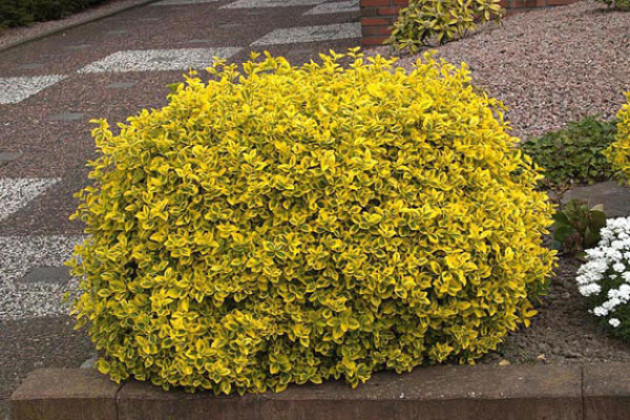
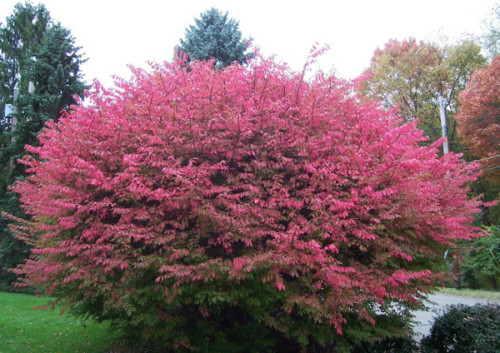
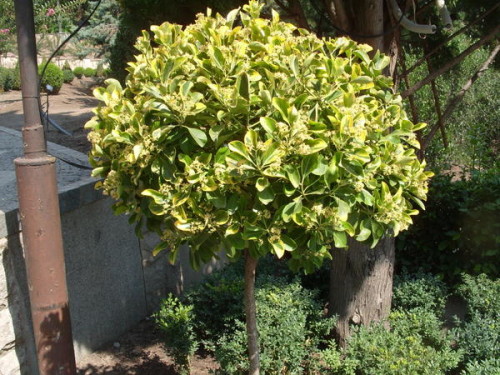
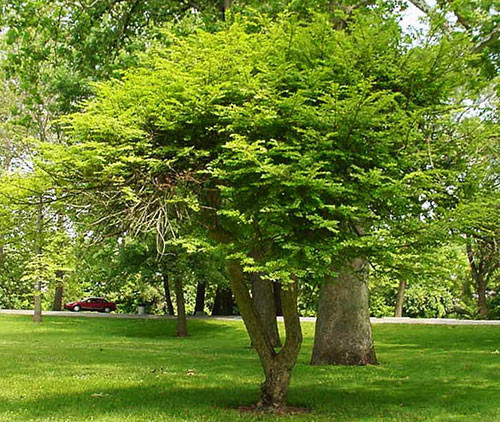
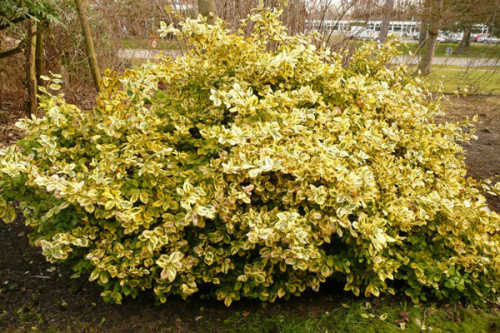

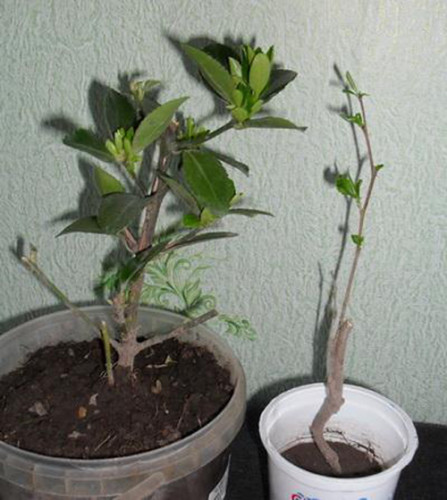
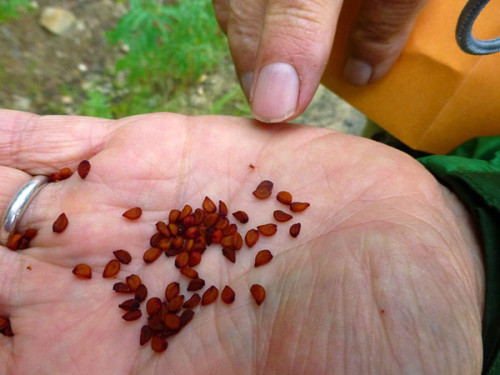
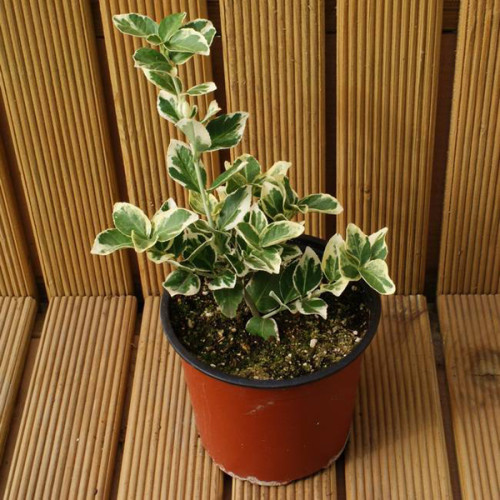
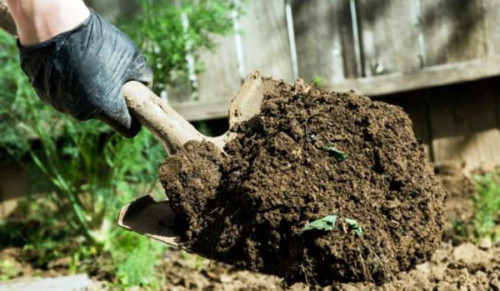

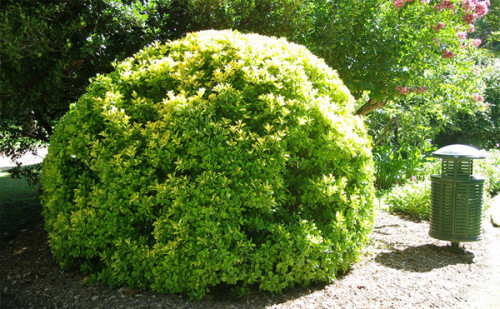

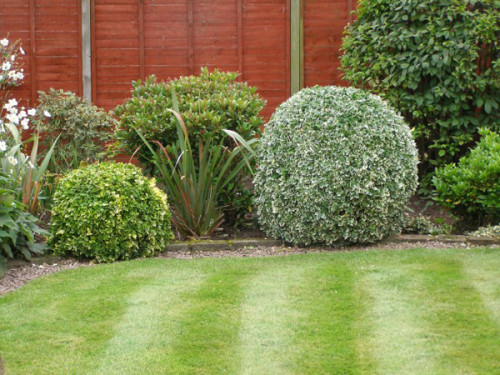












 Start a discussion ...
Start a discussion ...